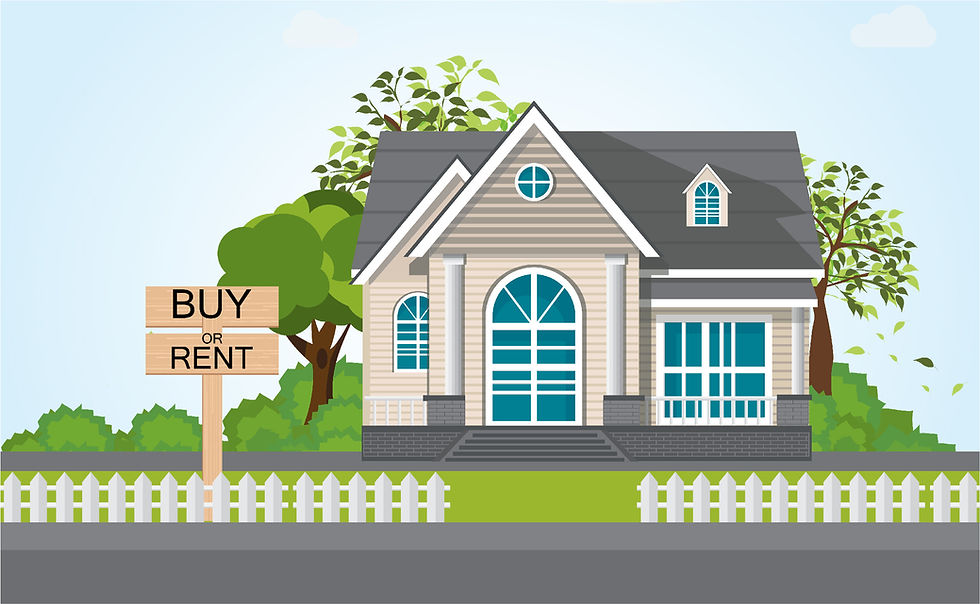REAL ESTATE | Buying Is Cheaper Than Renting in Chicagoland Area, New Realtor.com® Analysis Finds
- Glancer Magazine

- Mar 14, 2021
- 4 min read

HOME SHOPPERS WHO WANT TO TAKE ADVANTAGE OF THE TREND MAY NEED TO ACT SOON THAN LATER
Buying a home was equal to or more affordable than renting in 15 of the 50 largest metros in the U.S. including Chicago; nine other markets were within 5% of flipping in favor of buying
Monthly cost to purchase a median priced home in the 50 largest metros was $1,988, compared to the median monthly rent of $1,727
Chicago, Cleveland, Pittsburgh, Riverside, Calif. and Miami among cities where it's cheaper to buy
San Jose, Calif., Austin, Texas, Sacramento, Seattle and San Francisco top the list of cities that favor renters
SANTA CLARA, CA– Despite double-digit increases in home prices and a record low number of homes for sale, buying is becoming more affordable in a growing number of the nation's largest cities, according to a new buy versus rent analysis released today by realtor.com®.
The analysis, which compared the monthly cost of buying a median priced home to the median price of renting a two- to four-bedroom unit in each of the top 50 markets in January 2021, found buying cost the same or was cheaper in 15 of the nation's 50 largest metros, up from 13 a year ago. Moreover, nine other markets were within 5% of flipping in favor of buying -- Atlanta; Orlando, Fla.; Birmingham, Ala.; Phoenix; Buffalo, N.Y.; Memphis, Tenn.; Washington, D.C.; Las Vegas and Milwaukee.
"There isn't a one-size-fits-all answer to the question of whether it makes more sense to buy than rent. However, this is encouraging news for the millions of millennials who are approaching peak homebuying age and may be considering shopping for a home this spring," said realtor.com® Chief Economist Danielle Hale. "With interest rates expected to rise over the coming months, buyers may need to act sooner rather than later to take advantage of today's affordability or be prepared to adjust their target purchase price."
Thanks to historically low interest rates, the monthly cost to purchase the median price home in the U.S. increased a mere 0.2% year-over-year to $1,988, despite the double-digit growth in home prices. The cost to rent was up 2.4% to $1,727.
On average, buying the median priced home accounted for 32% of a metro's median income, just slightly above the upper limit of the budgeting rule of thumb of spending 30% of gross income on housing costs. The cost to rent accounted for 27%.
BELOW AVERAGE LISTING PRICES MADE IT MORE AFFORDABLE TO BUY
In the top 10 metros that favored buying over renting -- Cleveland, Chicago, Pittsburgh, Riverside, Calif., Miami, New Orleans, Baltimore, Tampa, Fla., Hartford, Conn. and Detroit -- the median listing price of a home averaged 7.7% lower than January's national median listing price of $346,000, while rents were 0.7% greater than the top-50 average. The monthly cost of buying in these metros dropped 0.2% compared to last year, while rents have risen 4.9% during that same period. The end result is that those who buy in these metros are able to save an average of 11% of their monthly costs compared to renters.
MARKETS THAT FAVOR BUYING

REMOTE WORK OPPORTUNITIES TIP THE SCAELE IN FAVOR OF RENTING IN TECH MARKETS
With working from home becoming a more viable option for many, the nation's largest tech hubs have seen rents plummet in recent months as residents have chosen to leave urban centers for more affordable options elsewhere. The trend has widened the gap between renting and buying in tech hubs like San Jose, Calif., Sacramento, Seattle and Los Angeles, where those who choose to rent saved an average of 30% in monthly costs compared to those who buy.
TOP MARKETS THAT FAVOR RENTING

METHODOLOGY
Purchase and rent costs reflect current costs and do not take into account holding period, price and rent appreciation, and inflation. Purchase costs are based on purchasing with a 30-year fixed-rate, fully amortizing mortgage of 80% (20% down payment), and do include taxes and insurance and are calculated based on realtor.com® metro-level residential listing price data and mortgage rate data for January 2021. Rental prices include data from apartment communities as well as private rentals (condos, townhomes, single-family homes) listed on realtor.com®. All units were two- to four -bedrooms in size so as to be somewhat comparable to the typical home purchase. Household income data is from 2021 Claritas estimates are based on Census data. Only the 50 largest metros (ranked by number of households) were included in this analysis.
ABOUT realtor.com® Realtor.com® makes buying, selling, renting and living in homes easier and more rewarding for everyone. Realtor.com® pioneered the world of digital real estate more than 20 years ago, and today through its website and mobile apps is a trusted source for the information, tools and professional expertise that help people move confidently through every step of their home journey. Using proprietary data science and machine learning technology, realtor.com® pairs buyers and sellers with local agents in their market, helping take the guesswork out of buying and selling a home. For professionals, realtor.com® is a trusted provider of consumer connections and branding solutions that help them succeed in today's on-demand world. Realtor.com® is operated by News Corp [Nasdaq: NWS, NWSA] [ASX: NWS, NWSLV] subsidiary Move, Inc. under a perpetual license from the National Association of REALTORS®. For more information, visit realtor.com®.


































































































